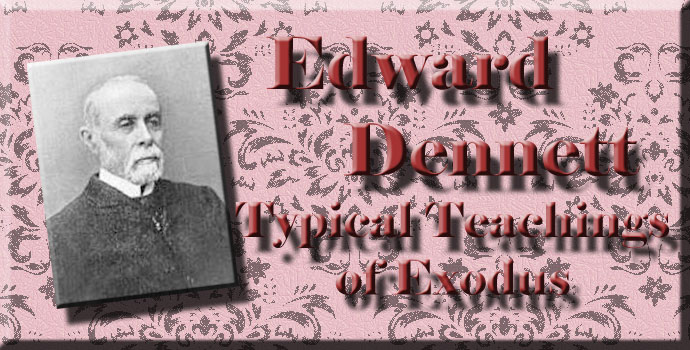
Typical Teachings of Exodus
By Edward Dennett
Prefatory
THE following chapters are very simple and purely expository. In dealing with the Tabernacle and its sacred vessels, the subject might have been made more attractive if embellished with illustrations. It may be questioned, however, if pictorial representations, though they may have their value in an educational point of view, whether for the young or for the student, do not really hinder rather than aid in the apprehension of spiritual teaching. Now that the veil is rent, and believers have access, in virtue of the precious blood of Christ, into the holiest, into the immediate presence of God, the meaning of the Tabernacle is best understood by looking back upon it through the light of the fulfilment of all in Christ. For He, and He alone, is the key wherewith to unlock these sacred mysteries. In a word, it is Christ who explains the Tabernacle, and not the Tabernacle which explains Christ. The Tabernacle indeed was not a type, but an antitype, and was only "a figure for the time then present," "the Holy Ghost this signifying, that the way into the holiest of all was not yet made manifest, while as the first tabernacle was yet standing." (Heb. 9: 8.) It is therefore the earnest hope and prayer of the writer that the perusal of these pages may, by the blessing of God, help the reader to discover more of the beauties and the excellencies of the person of Christ, and to understand more fully the nature and perfection of His work, as well as the blessed place of privilege and grace into which believers have consequently been brought.
E. Dennett
LONDON, 1882.
-
Site Navigation
 Home
Home What's New
What's New Bible
Bible Photos
Photos Hiking
Hiking E-Books
E-Books Genealogy
Genealogy Profile
Free Plug-ins You May Need
Profile
Free Plug-ins You May Need
 Get Java
Get Java.png) Get Flash
Get Flash Get 7-Zip
Get 7-Zip Get Acrobat Reader
Get Acrobat Reader Get TheWORD
Get TheWORD